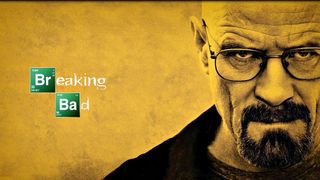From BSkyB to Breaking Bad: how digital tech transformed TV
Digital TV celebrate its birthday but will web spoil the party?

15 years ago this week, something amazing happened to UK TV: Sky Digital went live, paving the way for terrestrial digital television which officially launched a month later in 1998.
If you could get it, you'd have been delighted. The picture quality, sound quality and choice of channels was way beyond anything analogue satellite had offered and it made terrestrial telly look, well, pretty terrible.
While Sky was improving the stuff we could watch, the way we watched things was changing too. We upgraded from CRT to flatscreens, from 4:3 to widescreen and then to HDTV.
TV started to become something that worked to our timetables rather than the broadcasters'. We watched DVD box sets or Series Links on Sky+ rather than huddling around the TV at an appointed time.
And of course, there was the internet. Online word of mouth could rescue poorly performing programmes, while ever-faster connections meant that if broadcasters wouldn't meet demand then the pirates would. When Sky Digital launched, downloading an episode of a US TV programme would have taken hours, or maybe days. Now you can stream in HD even on a fairly crappy connection.
Skip 15 years and Sky has bolstered its own services to offer digital downloads, offered high-definition and 3D channels and launched Sky Go to take its channels mobile. It has also watched as other services have impressively played catch-up to its technology.
So it's kind of fitting that in the week of Sky Digital's anniversary a TV show (this time not on Sky) showed the world where the future of television was going.
Get daily insight, inspiration and deals in your inbox
Get the hottest deals available in your inbox plus news, reviews, opinion, analysis and more from the TechRadar team.
Bad timing
Breaking Bad is a show that was borne out of the these technologies that have improved over the last 15 years.
The show's cinematographer told Forbes that BB was "damn lucky" that people had widescreen HDTVs, DVRs and Netflix. It's likely that if it weren't for online word of mouth and piracy, we'd never have seen the episode where [REDACTED], let alone Walt [REDACTED REDACTED REDACTED].
As show creator Vince Gilligan explained to Digital Spy, without Netflix "we would have been cancelled" and "there was an upside to the piracy, because it got the word out".
15 years after UK TV went digital, and now TV is going through another dramatic transformation.
In many respects Breaking Bad is a poster child for the way we consume TV today. We find it by online word of mouth, consume it binge-fashion using catch-up services, streaming or boxsets, discuss it endlessly on social media and in episode recaps, and we expect to have it when and where we want it.
For example I watched the finale on an Apple TV - you might have watched it on an iPad, a Smart TV or through a connected Blu-Ray player.
Piracy and popularity
Others, inevitably, got it from torrents. The last time I checked, the BB finale had been downloaded more than 500 thousand times, and for some UK viewers even £6 for a monthly Netflix sub was £6 too much: Brits have been downloading this series in their thousands.
Maybe that isn't a problem, though. In the US, AMC was reportedly charging record rates for advertising spots around the finale. It's possible, as Gilligan notes, many of those viewers came to the broadcasts via torrents of the early seasons.
It's far from clear that piracy means lost income: the previous piracy record holder, Game of Thrones, doesn't appear to have suffered ratings failure or poor DVD sales.
And of course Netflix famously scours the pirate networks to see which programmes are most popular and uses that data to guide its buying decisions, a process that suggests that even a piratey cloud can have a silver lining for programme creators.
But it's also important to take some of the new-tech triumphalism with a big pinch of salt. Netflix may be responsible for House of Cards and Orange is the New Black, but it wasn't responsible for Breaking Bad, a programme commissioned by a cable network who believed in Vince Gilligan's story long before it appeared on any streaming service's radar.
And ultimately, the finale was a classic example of water cooler television. The only way you could ensure that you wouldn't see or hear spoilers before you streamed it was to lock all the doors, turn off the internet and refuse to go to school, college or work until you'd seen the episode for yourself.
Despite tech advancements, though, In the end some things do remain the same. I remember the grown-ups doing much the same thing in the 1980s when JR Ewing got shot in an episode of Dallas.
Breaking Bad may be the better programme, but it demonstrates that while our tech has been transformed the basics haven't changed: we all love stories about bad men who wear hats.
And this will continue just as it did from analogue to digital, from the web to beyond.
- Want a better TV? Then check out these beauties.
Writer, broadcaster, musician and kitchen gadget obsessive Carrie Marshall (Twitter) has been writing about tech since 1998, contributing sage advice and odd opinions to all kinds of magazines and websites as well as writing more than a dozen books. Her memoir, Carrie Kills A Man, is on sale now. She is the singer in Glaswegian rock band HAVR.
Most Popular


